Across the country, land managers are building bike trails to increase the use of parks and public land. Simon Vincett reports.
More and more people are choosing mountain biking for their active recreation and their regular dose of nature, and parks authorities are more and more happy to accommodate them.
It hasn’t always been this way, however. For the rider, access to parks has been a long-standing issue, with many a mountain biker chased out by a ranger. The two sides have often been competitors for the space, rather than sharing a mutual interest.
But now informal trails, built furtively by enthusiasts, are being recognised and often embraced by land managers, who wish to encourage recreational activity in their parks.
Luke Chiu of trail building company, Dirt Art, reports that a solid proportion of their business is enhancing popular guerilla-built trails which councils and land managers have come to realize can’t be closed down. The process is to make the trails sustainable, with good drainage and stable construction. Dirt Art have been commissioned to formalise such trails all over Australia, from Tewantin National Park in Noosa to council reserves in Tasmania.
Proactive efforts are also reaping results, with land managers initiating purpose-built mountain bike trails and, upon attracting enthusiastic usage, confirming the need for more. For example, the North South Track on the slopes above Hobart has quickly become the most-used track in Wellington Park. Similarly in Townsville, new mountain biking trails on Cape Pallarenda draw 250 riders a week in the peak period and the local MTB club has grown by 150 riders since they were opened.
Architect of the Townsville trails, Jason Vaughan, is a Senior Ranger with Queensland Parks and Wildlife, specialising in infrastructure. He explains the genesis of the facility: “We had a bit of a push to promote more active recreation in parks. That’s all come from what’s happening with Parks Victoria and their ‘Healthy Parks, Healthy People’ program. There’s a recognized issue of obesity and people not being as active as they used to be.”
Home to the second largest mountain biking club in Queensland, the Rockwheelers, off-road riding was identified as an activity with the potential to be popular in Townsville. “From an outdoor recreation point of view it was seen to be a growing demand,” Vaughan explains.
“We started off with Under the Radar as an intermediate-grade trail. For stage two, we built some beginner-grade trails—the Lagoon Trail and the Freshwater Trail—to introduce active recreation to groups looking for easy access on bikes, on foot, trail runners and bird watchers.
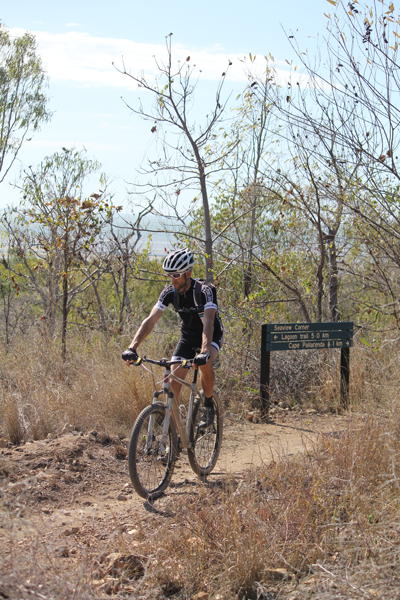
“Then 12 months after we opened Under the Radar, we did a survey and identified there was a demand for something a little more physical, a little more technically challenging but still in that intermediate-grade. And that was Smedleys.”
This network comprehensively covers the Cape Pallarenda and Town Common area immediately on Townsville’s northern outskirts.
“All up we’ve spent about $800,000 on trails,” says Vaughan. “The Rock-wheelers certainly noticed a big jump in their membership after Under the Radar opened. They captured an extra 150 members in 12 months which can only be explained as a whole new pool of riders who live on this side of the hill heard about the new trail.
“We did a lot of promotion when we opened. Any of the coffee shops that were popular with road riders, we put posters up. We put posters in all the bike shops. We saw a big transition of road riders starting to try mountain biking because of Under the Radar.”
Encouraging and measuring the usage of the infrastructure has twin motivations for Vaughan: it not only justifies the expenditure but it also provides and establishes the public health benefit—a new and increasingly important metric for government agencies, including Queensland’s Parks and Wildlife.
“Over the past ten years there’s been a growing recognition of the health benefits of cycling, particularly among people in the middle-age bracket,” Vaughan explains. “It has much lower impact than running, so people are turning to it, in response to health recommendations, to try to live a healthier life.”
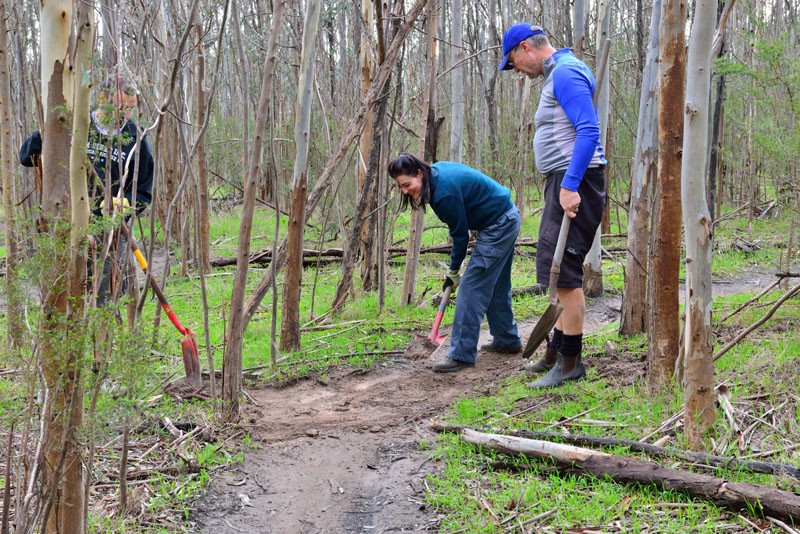
It seems that mountain bike trails provide excellent opportunity for activity, in north Queensland in particular, as Vaughan explains: “The reality is that bushwalking in a hot tropical climate is not suitable year round, whereas on a bike, the period where it’s comfortable is greatly extended, because you create your own air flow. Mosquitos can’t keep up with you when you’re riding either. We’ve got a number of longer distance walks—in excess of eight to ten kilometres—they just aren’t popular activities for people outside of the winter months.“
For a deeper understanding of the ‘Healthy Parks, Healthy People’ philosophy which is motivating the construction of mountain bike trails on public land, it makes sense to ask a Victorian park ranger, for the initiative is Parks Victoria’s. Chris Hardman is the Director of the Melbourne Region for Parks Victoria.
“With the urban parks and waterways, which are my responsibility, we look at maximising the opportunities for people to participate being out in nature,” Hardman says. “We think it’s a fundamental need for human beings to be out and connected with nature.”
“Health comes from overall wellbeing,” he explains. “We know that being active in parks contributes significantly to positive health outcomes, particularly with mental health, hence the expression ‘Feel blue, touch green’. Being out in nature can really help with depression and anxiety, for instance.”
But there’s more complexity to the ‘Healthy Parks, Healthy People’ program—it describes a system in balance: a symbiosis between the wellbeing of people depending on the wellbeing of the natural environment. If the natural environment is in poor health it has a reduced capacity to provide health benefit to its visitors. Therefore, appropriate management by park authorities balances the access of visitors with maintaining the health of the environment.
As a mountain biker himself, Hardman knows the pleasure and value in spending time in nature which the activity brings for riders. As a ranger, he is qualified to judge that riding authorized trails has no inherent negative impact on the natural environment.
Hardman also dismisses claims of incompatibility between walkers and mountain bikers: “We find that if people are respectful in the bush then they can coexist. Tensions do occur between recreational groups, whether it’s four wheel drivers, trail bikers or horse riders. Every activity needs a bit of space. It’s incumbent on cyclists and walkers alike to recognise and respect each other. Walkers are obviously travelling at a slow speed. It can be very scary if a bike just rocks up behind you. If you don’t have a bell, you must call out.
“My own experience is that walkers are very happy if you let them know that you’re coming. The relationship for most parts is great. Depending on the landscape and depending on the demand, we will have shared or single use trails so we can separate through time and space. The solution is different across the landscapes.”
Such is the enthusiasm for trails to ride on that riders frequently take up shovels and build guerilla trails themselves.
“The demand is enormous,” says Hardman. “It is the single biggest new recreational demand that we’re facing in Victoria and possibly all over Australia, and it can be challenging in terms of the informal or illegal trails that have been built.”
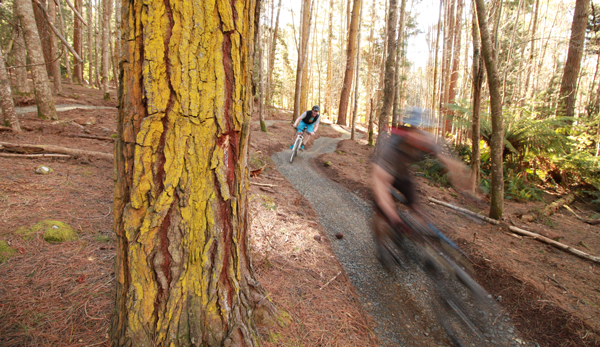
“Parks Victoria has been actively involved in mountain biking for a long time,” Hardman points out. “We have dedicated mountain biking facilities at Lysterfield Park and the You Yangs and we partnered with other government departments to develop another mountain bike facility in Forrest. We’re working closely with the Shire of Yarra Ranges on the potential to develop a really great mountain biking opportunity in Warburton Valley.”
But it’s not enough, Hardman recognises: “For all the trails we have built, demand outstrips supply many times. It’s going to take some time to ensure that we provide a reasonable opportunity for this mountain biking activity. It won’t happen quickly—it’s a complex environment we’re working in. What you need is land managers, like ourselves, that are prepared to work with the users to try and develop appropriate and sustainable trails.”
For instance, there will always be demand for trails close to where people live.
“We’re really keen to work with local communities to build sustainable trails,” Hardman says. “We’ve recently established a collection of trails in partnership with the Red Hill Riders at Arthurs Seat on the Mornington Peninsula. We’re working very closely with local groups to formalise trails through a number of parks in the metropolitan area: such as the great single-track along the Yarra River and in the Dandenongs around Silvan.”
The check on the expansion of trail networks is the mandate to preserve the health of the natural environment.
“People build trails where it’s not sustainable,” explains Hardman. “With ‘Healthy Parks, HealthyPeople’, it’s absolutely essential that we don’t do things that are detrimental to the environment of the parks that we manage.
“It has been proved that mountain biking can be done sustainably—it can be done and not have significant negative impacts on the environment. It’s about the standard to which we build things, such as the drainage, and the trails have to be in the right place.
“So in partnership with the Department of the Environment, Land and Water, we have developed a procedure that can step people through a process that will enable the formalization of trails where appropriate, but it also helps to decide the cases in which it’s just not appropriate to have trails in these areas.”
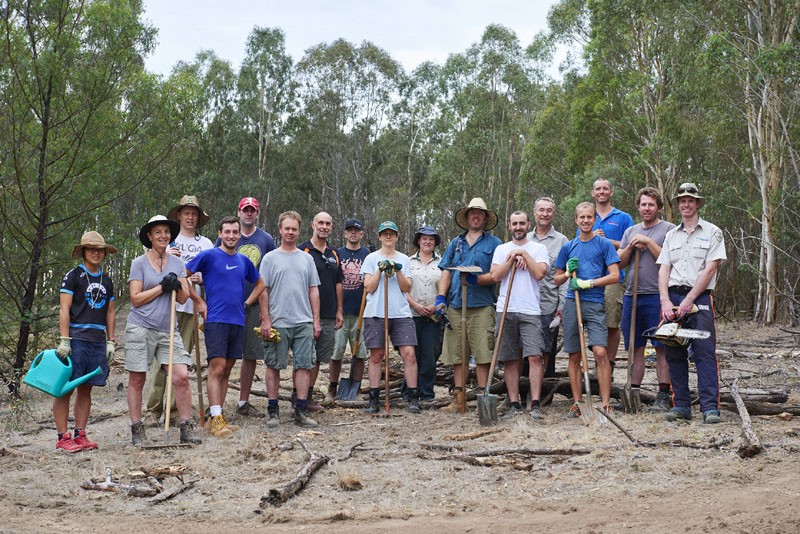
A great example of this is the collaboration between local enthusiasts and the land manager of Candlebark Park on the Yarra River in the outskirts of Melbourne. The area has been enjoyed by riders for at least 30 years, and in the process, they have created a network of trails. However, until recently, riding these trails has been against park rules. Now Parks Victoria and the Yarra Tracks and Trails group regularly come together for working bees for maintenance.
This volunteer group comprises of some riders who are longtime enthusiasts and trail builders in Candlebark Park. The group has an online presence in forums, where the dates and scope of their regular maintenance sessions are posted and volunteers are invited to join in. From the posts, it is clear that the group is as delighted to have their stewardship of the trails recognised, as it is to have their beloved trails in good riding order.
“The upshot of all this initiative is that the MTB community and Parks work together on what have traditionally been unauthorised trails,” explains ‘gcouyant’ on the Australian Cycling Forums. “MTB enthusiasts have demonstrated to Parks that we’re not a bunch of cowboys and have earned the support of relevant authorities. Bonus is, we get to keep trails and develop more—all on a zerostress volunteer basis so that individuals can participate and have a say whenever they want.”
Indicative of the partnership, during scheduled work sessions the group’s trail maintenance is also covered by Park Victoria’s insurance.
In quick time, the potential for expanding the collaboration was realised: “We will continue to perfect the working model with Parks so that the relevant authorities can then harness trail user enthusiasm and duplicate this volunteer model over the entire trail network [within the larger Yarra River corridor].”
The satisfying result, reported within six months of working together was: “The state of the trails over winter were markedly better than the rest of the trail network.
“Other than improved trails, what we’re really trying to achieve is to demonstrate to the relative authorities that there is an effective and cooperative formula to follow—and to prove that cyclists aren’t just a bunch of cowboys who vandalise trails. Parks have taken a huge step to embrace the sport and support cyclists.”
Ride On content is editorially independent, but is supported financially by members of Bicycle Network. If you enjoy our articles and want to support the future publication of high-quality content, please consider helping out by becoming a member.

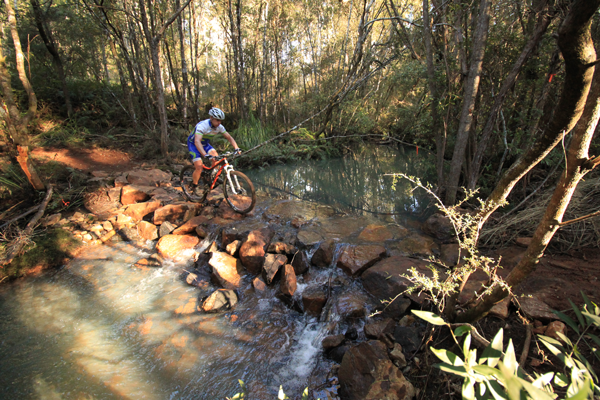
what an exceptional article. We are presently working with Toowoomba Regional Council on our MTB Strategy and future trail development. Your article clearly articulates the need for MTB trails and shows how cooperation between user groups and land owners can be beneficial to all. Thanks, your article will lend massive support to our cause.